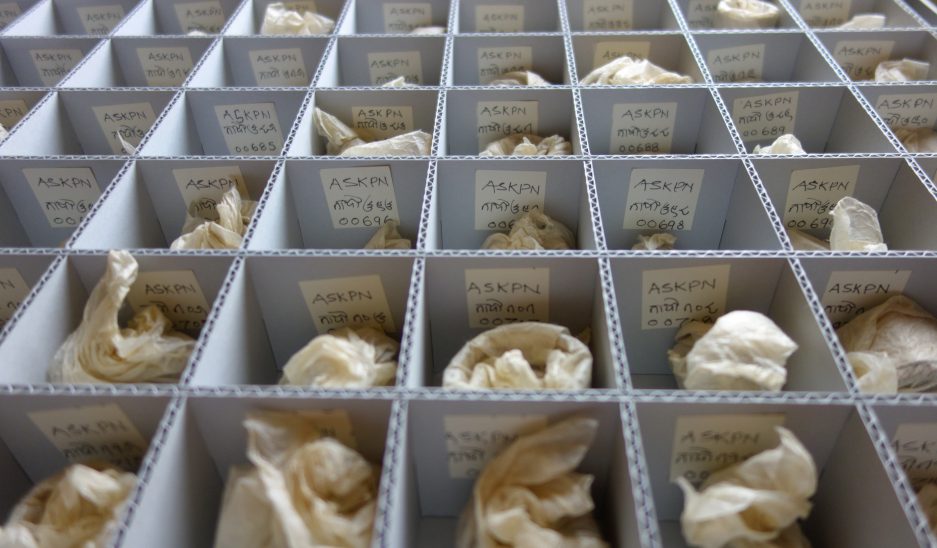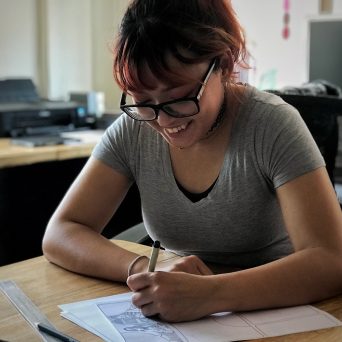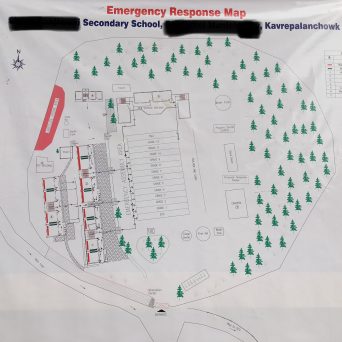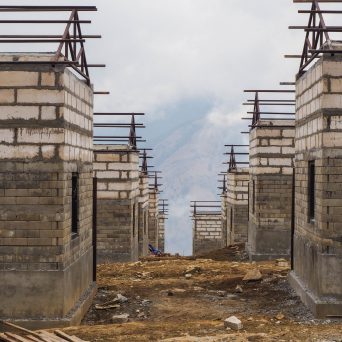
Locating Repairs, by Yogesh Raj
The recent overnight floods in residential areas in the Kathmandu Valley, landslides in the mid-hills across the country, and major rivers running above the red-alert levels, have triggered flashes of furious opinion and complaint in the Nepali media once again about the ways in which natural disasters are responded to by the Nepali state and society. On a more exasperating note, a senior researcher colleague raised this question in a recent meeting: Will the Nepali state and society ever remember and learn from the past? He was referring to the ways in which state organs such as the Nepal Reconstruction Authority (NRA), its partner organizations and various individuals are running post-disaster reconstruction activities, as if the past did not matter. He wondered whether the experience of the Great Earthquake of 1934 had in any way shaped the administration and management of the programmes that followed the 2015 Earthquake, or whether lessons learned during the 2014 floods had tangibly helped in providing early warning and relief operations in the aftermath of the 2018 flooding in the Valley.
If states and societies do not learn from the past, what is the point of recalling traumatic moments while analyzing previous disasters? If gestures of commemoration are so empty of the potential to make us act more maturely, why do we invest in researching those rituals? If amnesia always plagues the bureaucracy that is designed to act swiftly with a built-in memory during recurrent natural disasters, why stress the need to design the measures they take in the light of historical experience at all? Put differently, have we really understood the logic of the short spells of emotional humanism in personal narratives and of rhetorical humanism in public discourse, given the indications that both the state and affected societies soon forget (deliberately or habitually so, in some cases) the urgent calls to make use of historical experience?
These questions clearly have practical importance. They also go straight to the social value of our academic enterprise, with ever-increasing burdens on us historians to prove the usefulness of the knowledge we produce. The theoretical significance of these questions, however, seems to me more interesting.
I previously attempted to conceptualize the momentous events of disasters as ‘ruptures’ and the long, drawn-out restorative processes in their aftermath as ‘repairs’. Viewing our attempts to achieve ‘normalcy’ as repairs, I suggested that the ‘normal’ achieved by responding to post-disaster challenges would be a new normal, not the ‘normal’ that the affected population often assumed to be lost or broken when the disasters strike. The pace at which societies strive to reinstate the normal seems to be dependent, by and large, on the efficacy of the bureaucratized components of the responsible institutions. However, this efficacy alone cannot determine which constituents or processes in the societies are quickly brought to a functional level. This can result in elites fast-forwarding resolutions that are not among the priorities of the dominated, marginalized and excluded groups.
The issue of the pace of recovery is also partly related to the question of whether the responses themselves help to feed in contradictions and develop into the causes of future disasters, with the most rapid recovery processes often setting up fixes and solutions at the core that are historically unfeasible for the said societies, and the slowest ones resulting in interminable suffering and therefore the unresolved discontentment of the affected population. When the interval between two successive disasters is sufficiently long not to fall into either of these extremes, the responses themselves are likely to be conventionalized or routinized as everyday social processes. I have called these routine responses ‘traditions’. In this sense, traditions are sites at which responses to past disasters are inscribed.
If this is a fair representation of the disaster aftermath, we should not expect to have any reflections on or memories of recent disasters such as the 2015 Earthquake affecting our present reactions. It is perhaps too early to detect the emergence of new traditions that have been encoded with both distant and recent experiences. I am sometimes exasperated by the fact that Nepal’s recent responses in the aftermath have not provided any proof that they were qualitatively better in any sense than those in the aftermath of the 1934 Earthquake. As a historian disinclined to make policy prescriptions, I will not despair. Perhaps we have not enquired into the broader social processes of the everyday sufficiently to conclude that the responses, and the memories of those responses, to that earthquake have in fact been completely lost. Memories, both private and public, operate on different time-scales than our emotions.
Traditions, therefore, are fruitful sites of historical research for deciphering a society’s preferred route to recovery. Which sorts of traditions are we to look for? The answer to that question depends partly on our expertise in decoding, and partly on which aspects were most shaken by the restorative activities. For instance, it is easy to imagine that building conventions and rituals will almost surely contain historical knowledge about how Nepali societies recovered from previous natural disasters. A few architects with a historical bent have at times suggested that the non-rigid coupling of wooden structural elements in the Kathmandu Valley buildings were designed to allow for violent ground movements. The skills of the carpenters and builders employed in erecting the Valley’s large festival chariots are often argued to be adequate for constructing buildings that tilt and twist during the frequent earthquakes in the Valley, but realign their vertical orientation after such short periods of shaking. Others have pointed out that their very collapsibility was achieved for two reasons: first, to minimize deaths due to the collapse of the structures; and second, to speed up the rebuilding by allowing for the reuse of materials. It has been indeed proved that more than 95% of the deaths that occurred during the 2015 Earthquake were caused by the falling of objects that were not secured firmly to the building components, and not by the collapse of structural elements. These are obviously sketchy suggestions, but they are indicative of the fact that historians of earthquakes can enquire into the ways in which Nepali societies in different historical periods have encoded their favourite restorative processes in traditional building practices.
Do we have other traditions to work with? Societies that suffer the most frequent inundations due to the shifting of river courses, such as those in the Irrawady or Bengal deltas, would surely have adapted their definitions of land-holding, and consequently the entire revenue administration, to the temporary character of their homesteads. Or, societies that have managed to survive periodic spells of severe food scarcity would have encoded their recovery strategies not only in food processing and storage technologies, but also in the very conventions about how their cultures distinguish between food and edibles which they do not normally prefer to eat, on the one hand, and between edibles and non-edibles (such as taboos and other items prohibited by religious or legal systems), on the other. These food traditions would be broadly shaped by geological and climatic factors, but their development would include elements which respond to the collective need to remember, for instance, famines and the unannounced arrival of hungry guests. Again, these are suggestive thoughts, but I assume, interesting enough for historians of disasters to start investigating traditions for locating repairs.



